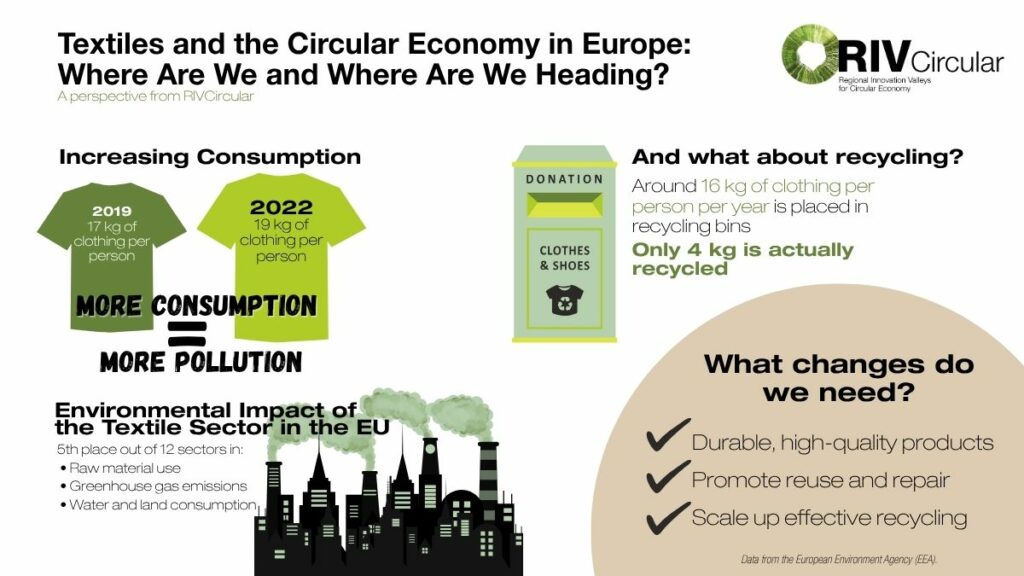One of the five strategic action pillars of RIVCircular is the circular economy in the textile industry — a sector that is becoming increasingly relevant both environmentally and economically.
But… what do we really know about the state of the textile sector in Europe?
According to data from the European Environment Agency (EEA), the textile sector in the EU has undergone significant changes in recent years. First of all, consumption. We have gone from consuming an average of 17 kg of clothing per person in 2019 to 19 kg in 2022.
This increase translates into pollution. According to the EEA, the textile sector ranks fifth among 12 domestic consumption categories in terms of raw material use, greenhouse gas emissions, and water and land use.
In 2022, raw material use was around 234 million tonnes, and approximately 159 Mt CO₂ equivalent were generated — comparable to the emissions from the restaurant and hotel sectors.
On the other hand, clothing recycling remains very low. Although each person typically places around 16 kg of clothing in recycling bins per year, only just over 4 kg of that actually ends up being recycled.
Moreover, of this textile waste, in 2019 alone, the EU exported nearly 1.7 million tonnes, mainly to Africa (46%) and Asia (41%), with uncertain destinations and end uses.
What changes do we need?
To meet the goals of the EU Strategy for Circular and Sustainable Textiles, we need a systemic transformation that promotes the manufacturing of higher-quality products with a longer lifespan, boosts reuse and repair initiatives, and, above all, enables large-scale recycling.
At RIVCircular, we believe that innovation in textile production and consumption is key to strengthening the EU’s competitiveness — and it is already happening.
That is why supporting innovation projects in the textile industry is essential, especially at a time when digital solutions are rapidly advancing.
We’ll be sharing more about our projects in this area very soon!
🔗 Check out the full EEA report:



